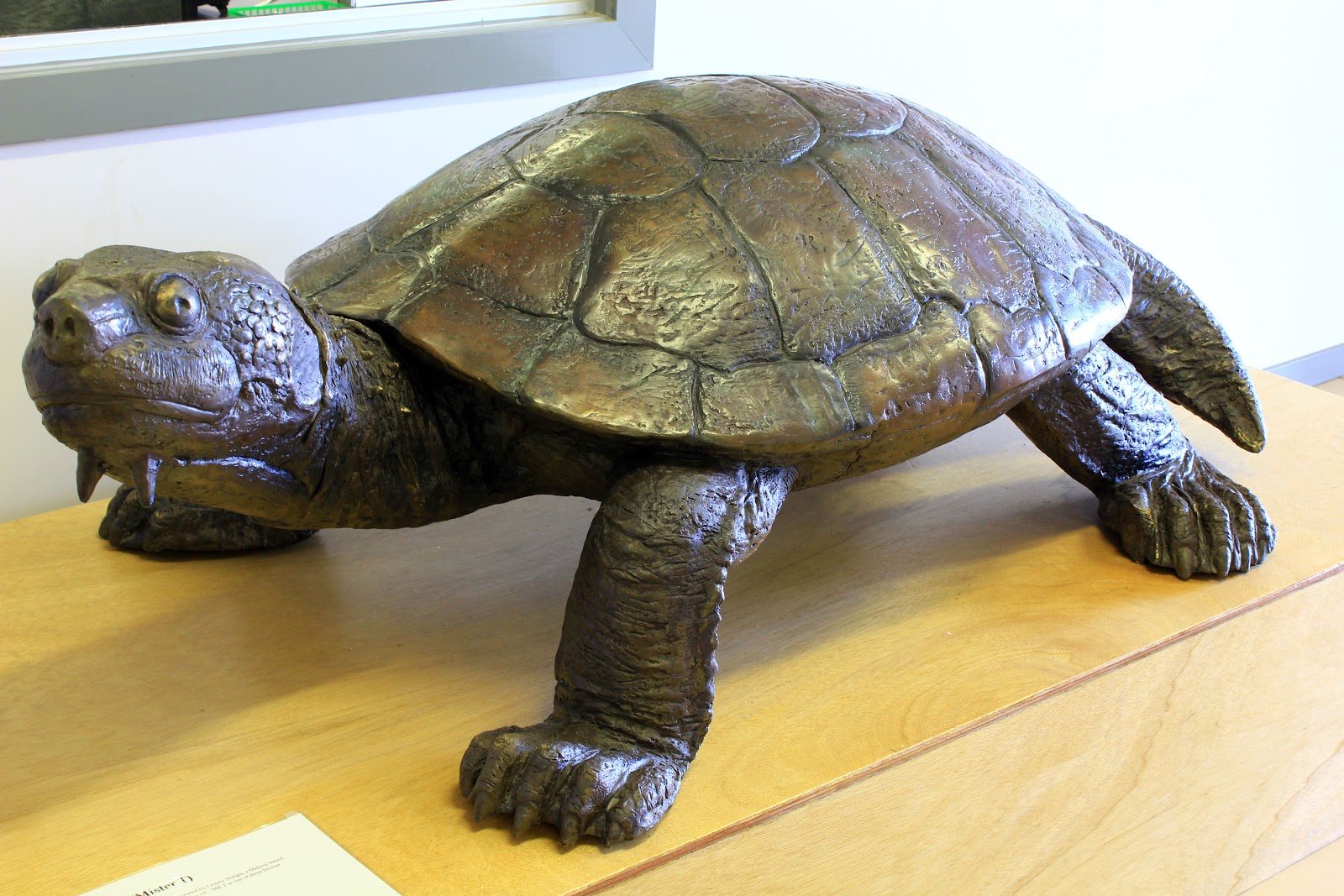More turtles… but this time we are switching from marine to
freshwater turtles. Through a friend of
a friend, I learned about an ongoing project with the Mary River turtle. I reached out to the contact and asked if I
could volunteer my time. I planned to
spend some time along my east coast drive in and around the small town of Tiaro
(in southeastern Queensland), where this project is based. I started by attending one of the meetings of
Tiaro & District Landcare Group, where I met its lovely members.
Established in communities across Australia, Landcare (and
Coastcare) groups are generally formed with a bottom up philosophy where
community members, concerned about a local environmental issue, seek to create
and maintain a partnership with the involved parties (government, industry, agricultural
community, etc.) to balance resource production and ecosystem conservation. Tiaro Landcare was established over the common
concern for the health of the Mary River, upon which the district is
dependent. One of their main projects is
the Mary River Turtle Conservation project.
The Mary River turtle is endemic to the Mary River Catchment and is
currently listed as one of the world’s most endangered turtles. By protecting the turtle, the Mary River will
also be protected. The Tiaro Landcare
Group has been raising awareness of this turtle. The existence of such an endangered species
played a major role in stopping the construction of a dam upstream of their
habitat. The turtle is becoming a mascot
of Tiaro; this model will soon be placed outside in the middle of the town,
where locals and visitors can view, touch, and climb over it (I thought of the
Make Way for Ducklings statues in Boston Public Gardens).
Much still needs to be studied about this short-necked
turtle, but researchers already know some of its interesting and unique
characteristics. Its barbels, the fleshy
projections under the chin, are long and quite noticeable. Like a few other freshwater turtles, the Mary
River turtle can extract oxygen from the water with gill-like structures in
their tails; therefore, they can spend more time underwater without needing to
surface. Depending upon the conditions,
hatchlings can remain underwater for a couple of days, which increases their
chances of survival from predators.
Unlike most turtles, the adult male Mary River turtle is significantly
larger than its female counterpart, and it is one of Australia’s largest
turtles. The male has a very large tail,
which can be as long as two-thirds the length of its carapace; the exact
purpose of this large tail is unknown.
The Mary River turtle has an interesting history. During the 1960’s and 1970’s, thousands of
hatchlings were sold as “penny turtles” to pet shops. It was believed that these hatchlings were
the common saw-shelled turtle. However,
as they grew, people realized it was a different species. Turtle enthusiast John Cann started searching
for the origin of this turtle. With many
false leads, the search took decades. It
wasn’t until 1994 that the Mary River turtle was formally described as Elusor macrurus. Because thousands of hatchlings were taken
over a period of 12 years, that practice caused major damage to the population
dynamics. It takes about 30 years until
the turtles are mature adults. Had those
hatchlings not been removed, they would currently be breeding and nesting. The commercial egg collectors had noticed
mass nesting events decades ago; without those hatchlings, there haven’t been
mass nesting events in recent years. Now
that the long search is over, the question becomes: Is the current nesting enough to sustain the
population?
To give the eggs an extra boost in surviving, the Tiaro
Landcare Group monitors and protects the nests.
The nesting season generally runs from October through December, but the
females tend to wait until rain events to lay their eggs, because the wet sand
will be more stable for building nests.
The group may relocate eggs if the nests are in danger of being
flooded. More often, they protect the
nests with netting and fences to keep predators like foxes and sand goannas
(next photo) out.
Because there was no significant rain during my volunteer
period, I helped out with a basking survey.
As mentioned, there is still much to be learned about this turtle. Additional information on the habits of the
Mary River turtle can help with its protection.
The group recently installed a wildlife camera which takes photos of a
log (a favorite basking area) every 5 minutes.
We spent a day at that spot observing and collecting information which
will be correlated with the camera snapshots.
The camera’s distance from the log can make it difficult to determine
the species and gender of the basking turtles, so we used binoculars to collect
that information and more. The two other
turtle species we saw were the white-throated snapping turtle and the Krefft’s
turtle.
The turtles seemed to stop basking once I retrieved my
camera on the first day. Unfortunately,
there was even more distance between us and the basking turtles at the second,
so my photos are not very crisp. We were
further upstream on the property of one of the group members. In the first two photos, all the turtles are
female Mary River turtles. In the third
photo, three turtles crammed into one corner of the rock. The smaller turtle with the lighter-colored shell is a Krefft’s. In the back, there is a male (left) and
female (right) Mary River turtle. Notice
the large tail of the male.







No comments:
Post a Comment